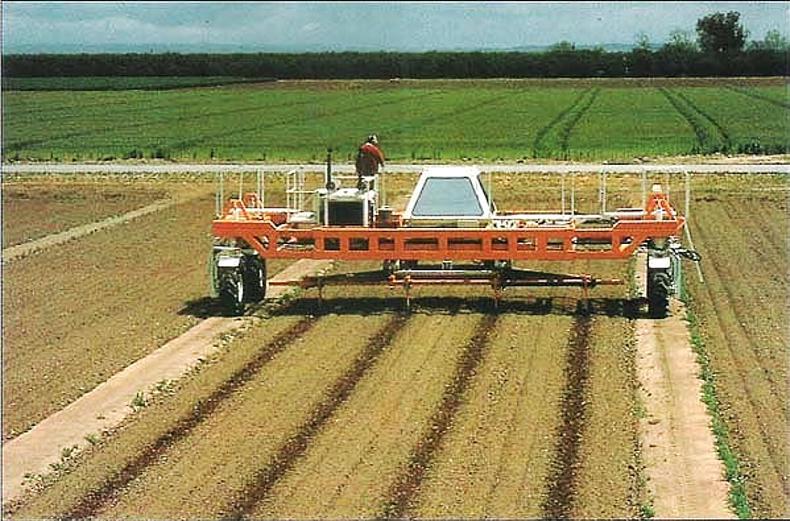Our tillage practices can threaten the soils structure. Heavy machinery can compact the soil, reducing pore space with consequent restrictions on nutrient and water uptake limiting growth and yields. Reduced soil carbon content in tillage soils can leave them less resilient and more easily damaged. The need to work on the soil in damp conditions can greatly compound the compacting effect of machinery. Because of these threats, we must manage the soil.

Identifying soil structure damage
While surface ponding and crop growth/colour associated with traffic patterns may provide good visual indicators of soil structure damage, it is best to methodically examine the soil using a visual soil examination method. Jer Emmet Booth (PhD student) has assessed a number of systems and uses the Visual Evaluation of Soil Structure (VESS) method where an intact spade-full of soil to 25cm is extracted and assessed using a picture guide to quantify its structural condition based on aggregate condition, root growth, porosity and other visual indicators.
The method results in a one to five score ranking for each significant layer of soil. A number of these tests should be carried out and it’s useful to compare areas where compaction may be suspected, to areas which may have been protected from traffic. Poor VESS scores may require improved soil management.
Relieving the pressure on the soil
While a soil loosening approach (sub-soiling/ripping) may be the immediate reaction to a soil structure problem, deep loosening can exacerbate the problem if the soil gets wet subsequently. Preventative measures should be given priority:
Controlled traffic farming
In controlled traffic farming (CTF) systems, the exact position of most or all of the machinery wheelings is restricted to specific paths in the field. This limits the area of the field exposed to wheel passes. In cereal crop production, up to 85% of the field is subjected to at least one pass of a tractor wheel. The original CTF proposals were based on large ‘‘beds’’ (12m wide), which used a gantry system to carry the necessary crop establishment, tending and harvesting machinery. While interesting, these systems were not practical for the normal range of farm crops and the concept never really developed. The advent of GPS systems and particularly <2cm repeatable accuracy RTK GPS systems, coupled with auto-steer, has now made a number of controlled traffic farming systems feasible.
In these cases, reasonably standard farm machines are used, but wheelings are restricted to specific pathways. It is accepted that a number of wheelings will be used but the machine operating widths are multiples of the base machine width. For example, a grower could have a 3m cultivation and sowing base width, a 9m combine header and a 27m sprayer and spreader. The combine travels in every third base wheeling, while the sprayer travels in every ninth one. There are a number of different variants:
CTF Optimove
The ability to accurately control all movements within a field opens up new controlled traffic concepts where route planning is optimised to reduce machine traffic. Teagasc is currently involved in a project with European partners looking at such developments.
The Irish component involves an intensive study of the impact of field headlands on soil structure, input application efficiency and crop growth and development. Mark Ward (PhD student) has so far studied 22 sites encompassing winter and spring crops across a range of soil types.
Soil examination and controlled traffic farming systems will both be featured in the machinery demonstration area at Crops & Cultivation.
